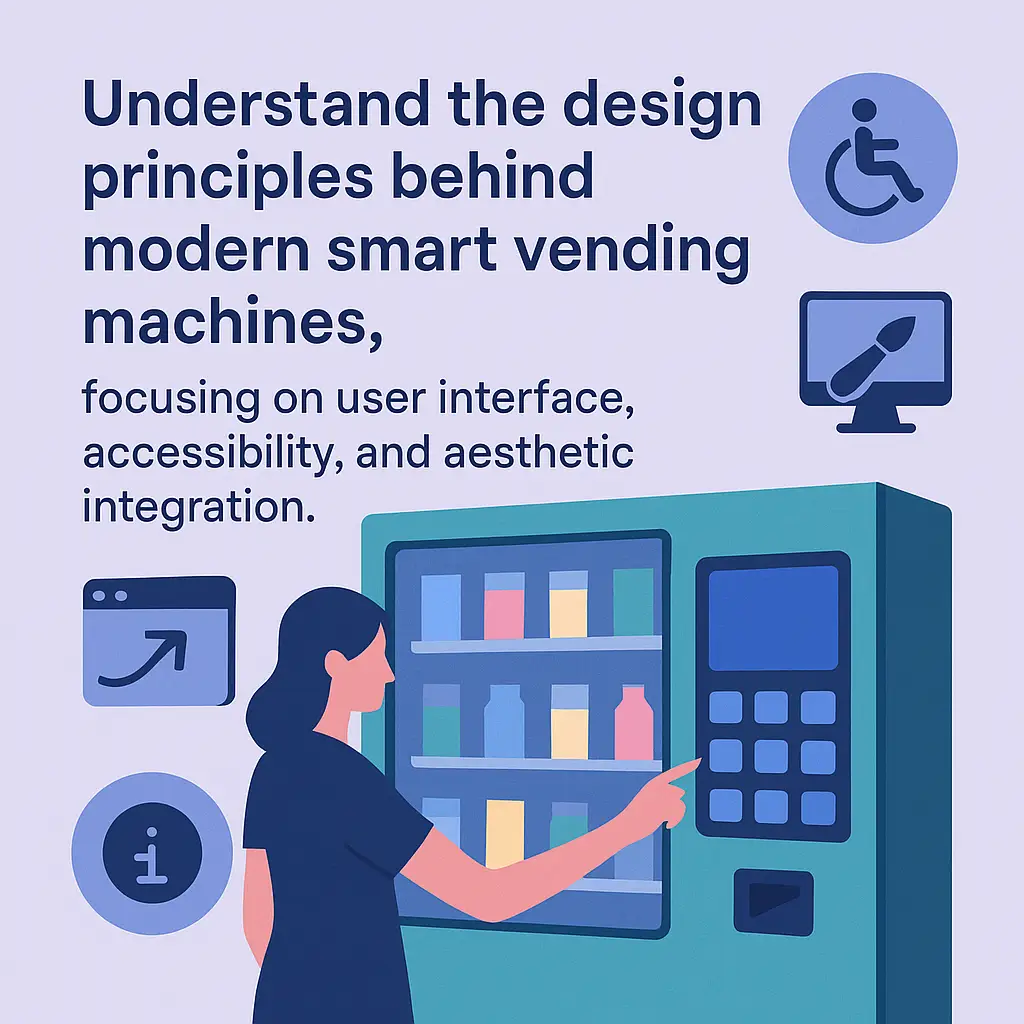Smart Vending Machine Design Principles
Understand the design principles behind modern smart vending machines, focusing on user interface, accessibility, and aesthetic integration. Improve user interaction.
Back to Vending Technology ResourcesUnderstand the design principles behind modern smart vending machines, focusing on user interface, accessibility, and aesthetic integration. Improve user interaction.
Back to Vending Technology ResourcesModern smart vending machines are engineered with advanced design principles to ensure seamless interaction, efficient operation, and a positive user experience. These machines go beyond simple transactions, becoming integrated elements of their environment.
![]() Intuitive user interfaces make purchasing effortless
Intuitive user interfaces make purchasing effortless
![]() Accessible features ensure inclusivity for all users
Accessible features ensure inclusivity for all users
![]() Sleek aesthetics enhance any location, blending technology with style
Sleek aesthetics enhance any location, blending technology with style

Smart vending machines represent a significant leap from their traditional predecessors, driven by sophisticated design principles that prioritize user experience, operational efficiency, and seamless integration into various environments. The core of smart vending design lies in its ability to blend advanced technology with human-centric thinking.
One of the foremost design principles is creating an intuitive user interface. This often involves large, responsive touchscreens that simplify product browsing, display nutritional information, and facilitate a variety of cashless payment options. The goal is to make the purchasing process as smooth and straightforward as possible, even for first-time users. Modern interfaces frequently incorporate engaging visuals and clear prompts to guide customers, enhancing satisfaction and encouraging repeat business. Further insights into payment systems can be found in resources like How Does Cashless Vending Work?
Accessibility is another critical design element. Smart vending machines are increasingly designed to be ADA compliant, ensuring they are usable by individuals with diverse needs. This includes considerations such as appropriate height for screens and payment terminals for wheelchair users, clear audio prompts for the visually impaired, and tactile feedback. Inclusive design not only broadens the user base but also reflects a commitment to social responsibility, making vending solutions available to everyone.
Aesthetic integration focuses on how the machine looks and feels within its surroundings. Unlike bulky, purely functional traditional machines, smart vending units are often sleek, modern, and customizable. They can feature custom branding, dynamic digital signage, and lighting that complements the environment, whether it's a corporate office, a retail space, or a public transit hub. This design approach transforms the machine from a mere dispenser into an attractive amenity that enhances the overall ambiance of a location. Exploring different vending technologies, such as AI-Powered Vending Machines, reveals how aesthetics play a vital role in their adoption.
Beyond immediate user interaction, smart vending design also encompasses operational intelligence. Features like remote monitoring, inventory tracking, and predictive maintenance are built into the machine's architecture. This enables operators to manage machines more efficiently, reduce downtime, and ensure products are always stocked and fresh. Energy efficiency is also a key design consideration, with features such as LED lighting and advanced cooling systems reducing operational costs and environmental impact. For more on the technical side, consider reviewing Telemetry in Vending Machines.
Ultimately, smart vending machine design principles aim to deliver a superior, convenient, and visually appealing service that leverages technology to meet the evolving demands of consumers and businesses alike.
Core principles include intuitive user interfaces, robust connectivity, energy efficiency, flexible product configurations, and appealing aesthetics.
A well-designed UI, often touchscreen-based, enhances user experience by making product selection, payment, and interaction simple and engaging.
Accessibility ensures that people with disabilities, including those in wheelchairs or with visual impairments, can easily use the machines, often through ADA compliance.
Aesthetic integration helps the machine blend seamlessly or enhance its environment, improving its acceptance and visual appeal to users.
Many smart machines feature mobile app payments, QR code scanning, and voice commands to minimize physical interaction, promoting hygiene and convenience.
Designing for energy efficiency involves using LED lighting, advanced insulation, and intelligent cooling systems to reduce operational costs and environmental impact.
Yes, smart vending machines often allow for custom wraps, digital screen branding, and tailored product selections to match specific brand guidelines or location aesthetics.
Designed with remote diagnostics and inventory tracking in mind, smart machines enable operators to monitor performance, sales, and stock levels from anywhere, optimizing service.
Modern designs include robust physical security, advanced payment encryption, and sometimes integrated cameras or motion sensors to deter theft and ensure secure transactions.
Smart vending design emphasizes connectivity, interactive digital interfaces, advanced payment systems, data analytics, and aesthetic integration, which are less central to traditional vending.